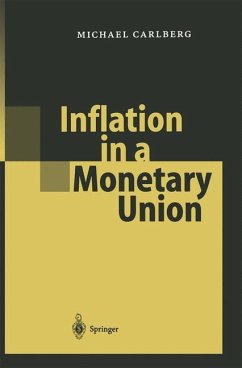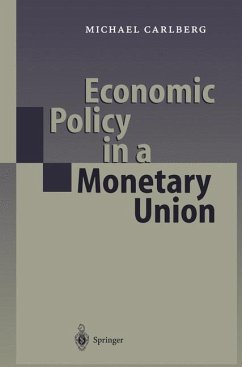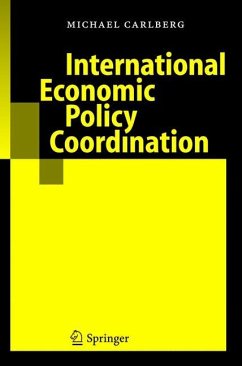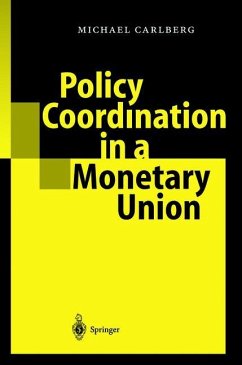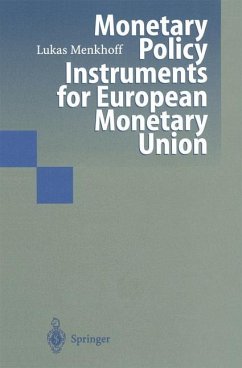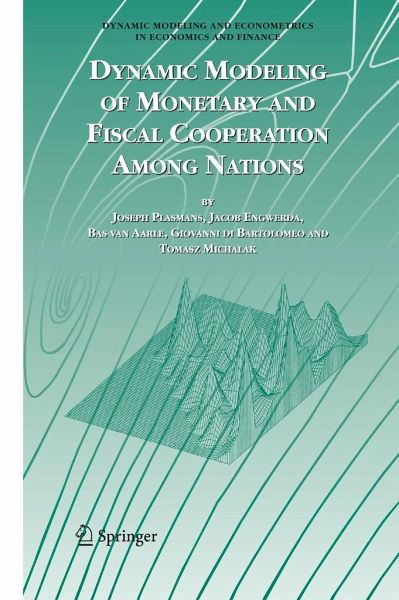
Dynamic Modeling of Monetary and Fiscal Cooperation Among Nations
Versandkostenfrei!
Versandfertig in 6-10 Tagen
113,99 €
inkl. MwSt.
Weitere Ausgaben:

PAYBACK Punkte
57 °P sammeln!
- International Policy Coordination
- Mathematical Background
- The Basic Symmetric Two-Country Model
- An MU Model with Active Monetary Policy
- Endogenous Coalition Formation Concepts
- Multi-Country Closed-Economy MU Model
- Accession to a Monetary Union
- World-wide Regional Policy Coordination
- By way of conclusion
- References.
- Mathematical Background
- The Basic Symmetric Two-Country Model
- An MU Model with Active Monetary Policy
- Endogenous Coalition Formation Concepts
- Multi-Country Closed-Economy MU Model
- Accession to a Monetary Union
- World-wide Regional Policy Coordination
- By way of conclusion
- References.
Dynamic Modeling of Monetary and Fiscal Cooperation Among Nations analyzes coordination of monetary and fiscal stabilization policies between countries and currency areas using a dynamic game approach. The first four chapters introduce the reader to the dynamics of fiscal and monetary policy cooperation. Issues covered include: fiscal coordination, fiscal stringency requirements, structural and bargaining power asymmetries and the design of monetary and fiscal policymaking in a monetary union. In the four last chapters multiple-player settings with aspects of fiscal and/or monetary coordination are analyzed using the endogenous coalition formation approach. The analysis is focused on shock and model asymmetries and issues of multi-country coordination in the presence of (possibly many) monetary unions.




